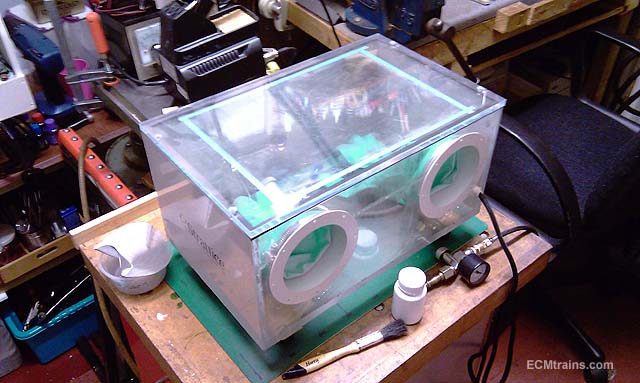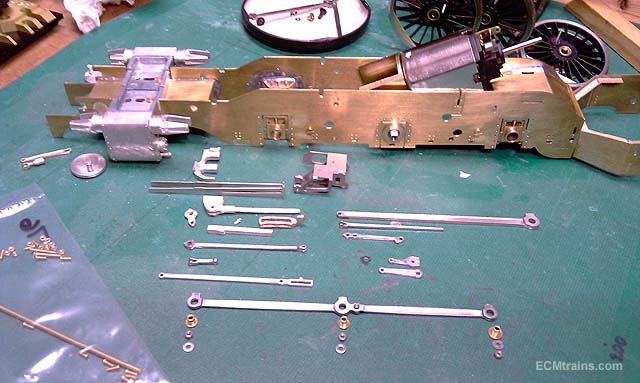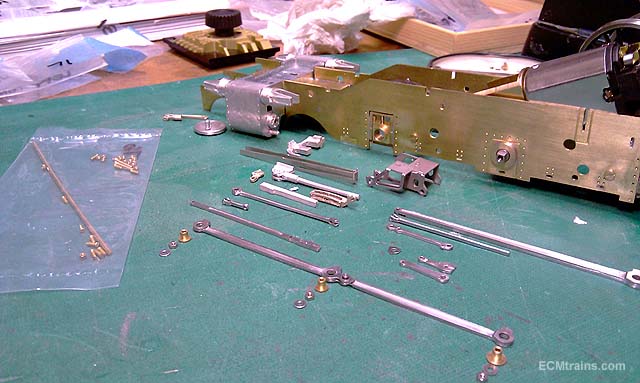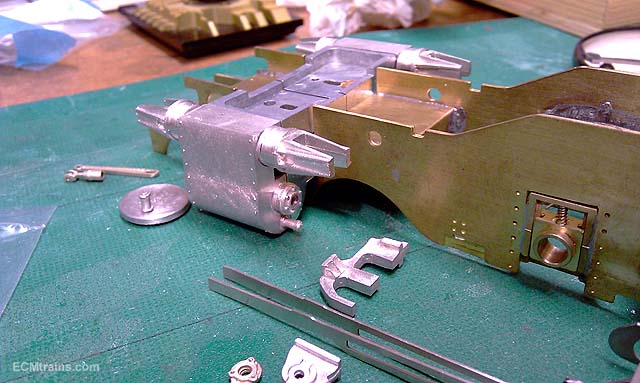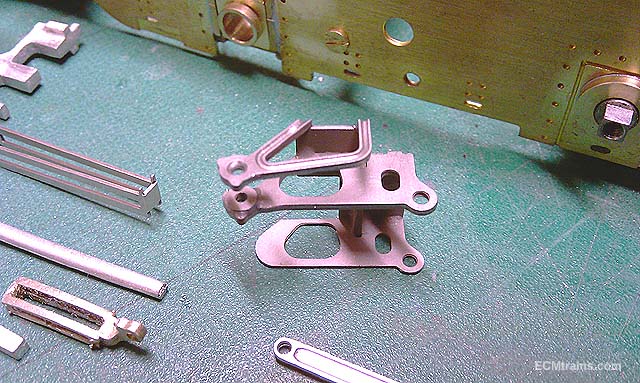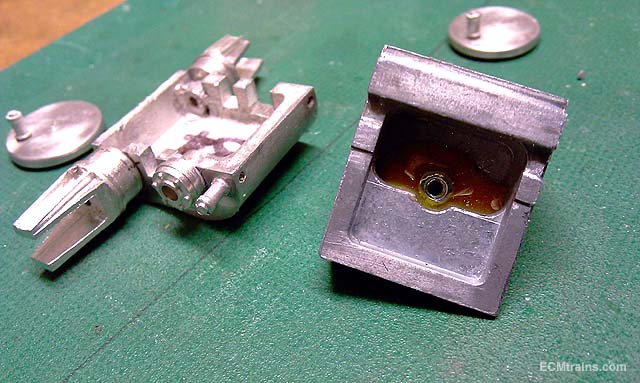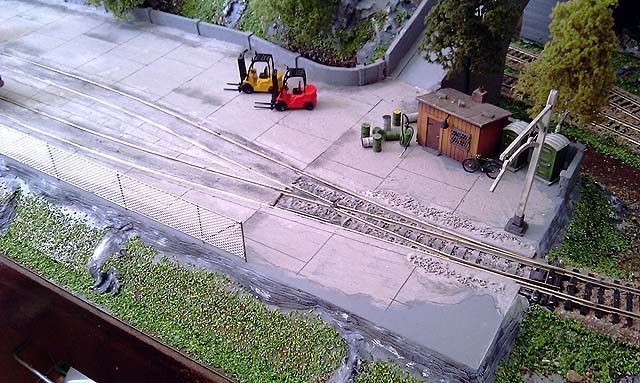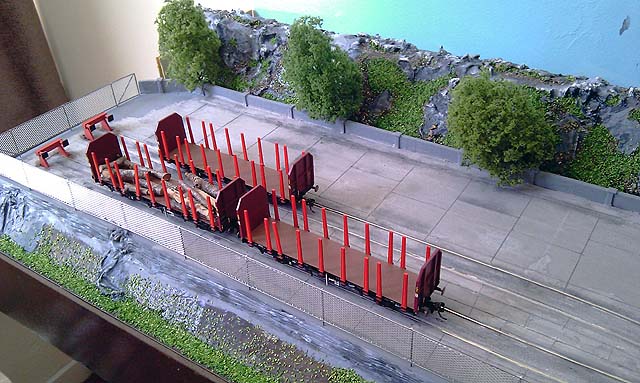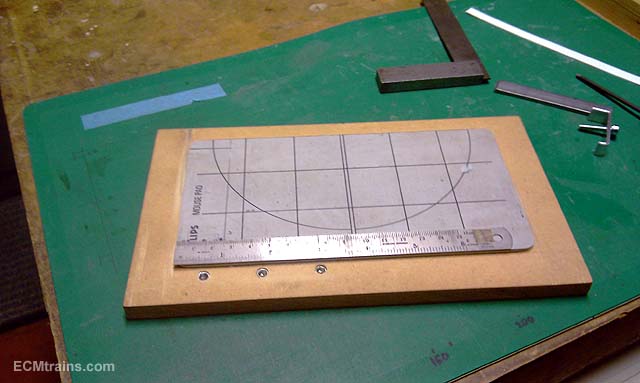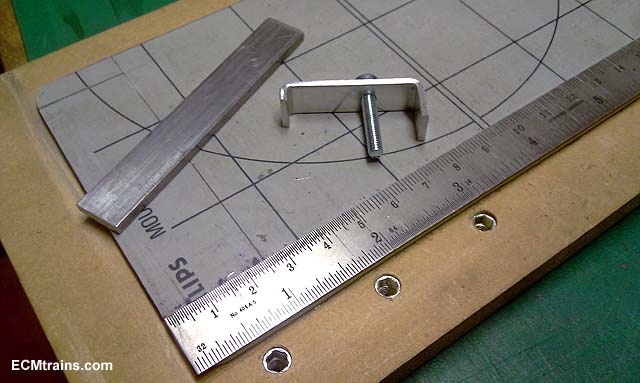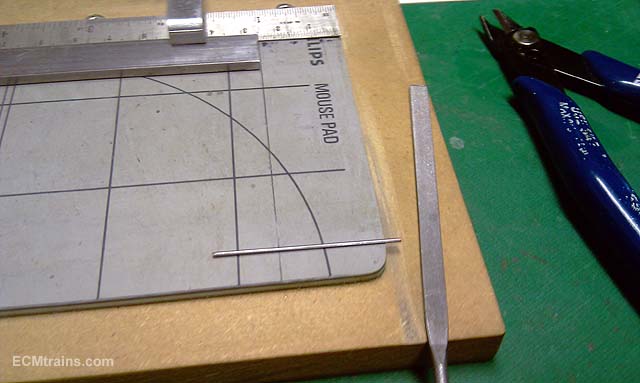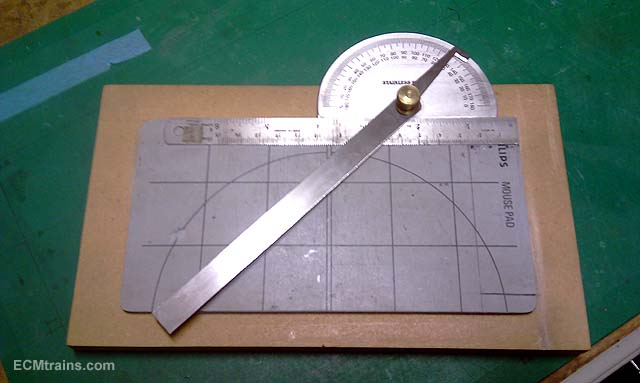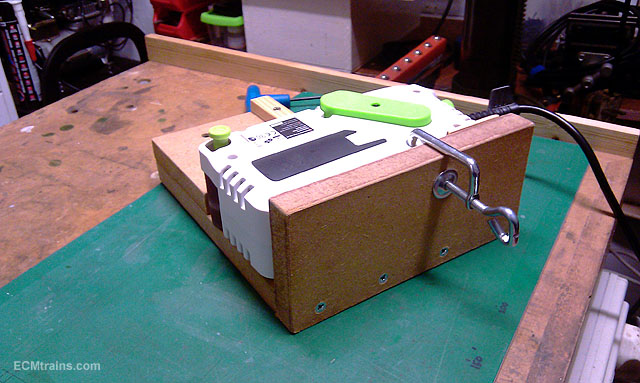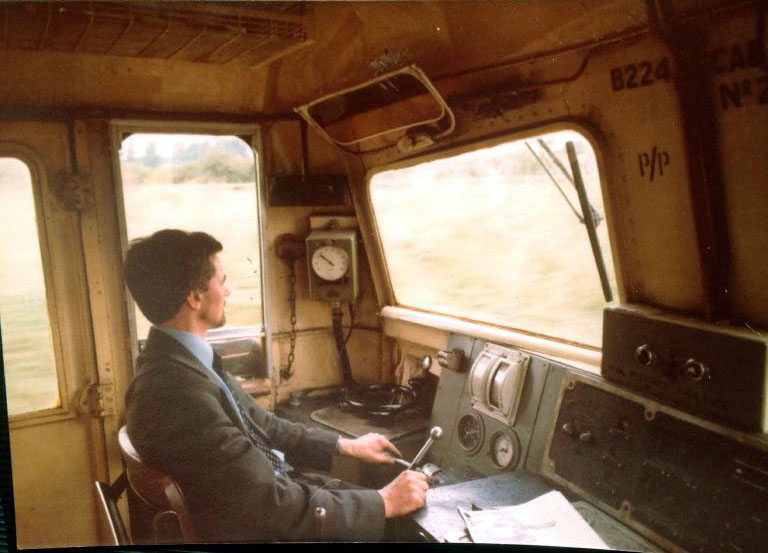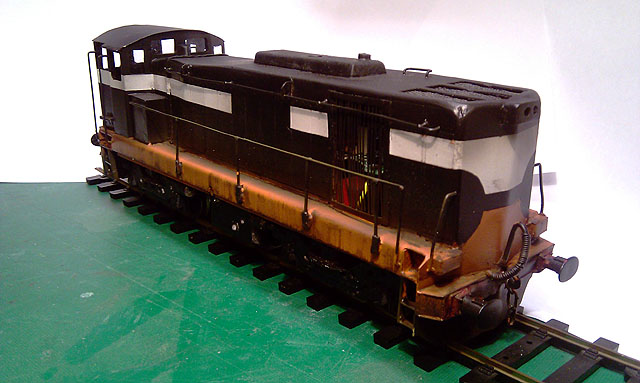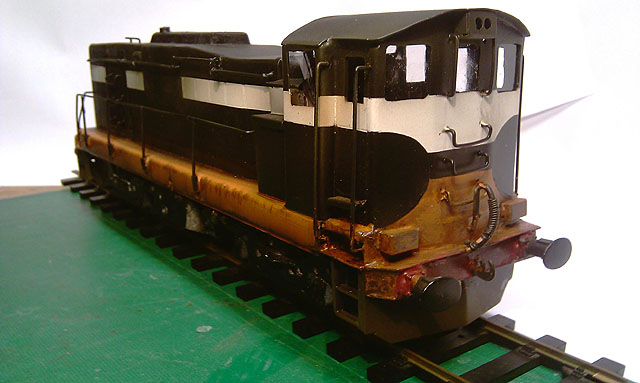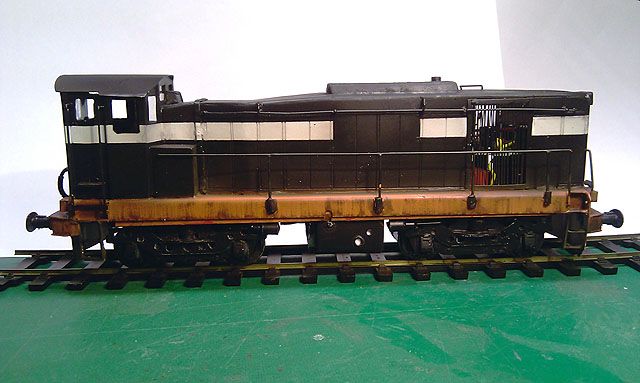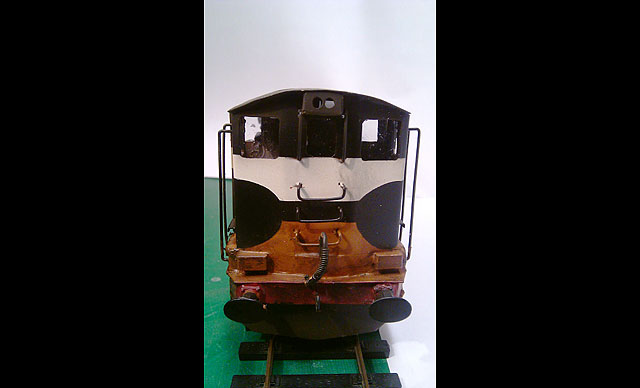-
Posts
2,731 -
Joined
-
Last visited
-
Days Won
70
Content Type
Profiles
Forums
Events
Gallery
Everything posted by murrayec
-

St Joseph's Hobby and Model Show Easter 2016
murrayec replied to Irishrailwayman's topic in What's On?
Hi Yes it was a good show, the layout was far better than previous shows but advertising was on the light side, 'twas great to meet IRM members and have a chat- even me Ma turned up. Sunday was buyers day, Monday was lookers day..... Eoin -
Hi richrua Its done like this;- Stick down art cardboard and grey undercoat it, then with a watery mix of Baseboard Dave's Polka powder 5101, paint on and keep the brush lines going in one direction, I then did a second coat even waterier all over and then added a bit of black water-base paint to the mix for around the tracks. I dashed on water in places to get a ware and pooling effect to the concrete surface around the tracks. note;- I used polyfiller to fill in the track where the card didn't! use another filler the polyfiller bloated with the water in the concrete mix when painting it on- I had to clean out the track twice so wheels could run!! Then mark out the concrete joins with straight edge and a sharp HB pencil or softer, then cut into the marked lines with a craft knife to give depth, then stick the pencil in the cut and draw it again freehand filling the cut with pencil lead. Take some pencil lead dust and smudge it around with fingers and paint brush- use a piece of paper to mask the edges of the concrete slabs to get variations. In the end the whole thing will be sprayed with a matt varnish before green stuff and wood-chip is laid down, there is more to go on it yet- keep watching Eoin
-
Another useful tool I've been sticking together for a while and finally got to test it on a bit of 'Scot Stuff' see sample in my Workbench. The airbrush blast gun is from Expo Tools, it works quite well but the grit reservoir needs to be twice the size. The cabinet is a medical display case from a friend and Woodies best chemical gloves from the gardening section. I gave my white metal 121 parts a blast and it worked an absolute treat, far easier than trying to do it in the full size blast cabinet with a nozzle for blasting an ocean liner! the little air brush still uses 60psi but the blast is tiny. The lid of the cabinet still needs to be finished, it needs to be set at an angle as the glare from the workshop lights reflected off the lid make it hard to see in. Eoin
-
Hay Kirley Your post on the G2 progress reminded me to post up a few shots- the G2 is looking great by the way. So over the Christmas and many nights here and there I got all the linkage and cylinder bits together, a mammoth task in the end. A cautionary warning here if anyone is building one of these kits or one of the newer ones- do not follow the instructions to the 'T' if you do your heading into trouble. Check and double check the fit of all parts and don't rely on the instructions alone- especially if soldering the parts, for example;- they would have you stick on the rear die-cast part of the cylinders (pretty tough stuff), then they have you stick on the cylinders and when you have done that all other parts don't sit square to this assembly. They then tell you to take a file to the cylinders to square it up- not an easy task stuck on to the chassis n all, far easier to do this before sticking it all together!! I caught this one just in time and took the easy route. Another key one is- the instructions indicate hand drilling some of the components- deep drilling of white metal up to 6mm! and drilling brass in any thickness!! don't do it by hand unless you want to destroy the parts- do it with the parts clamped to timber in the drill press- it needs speed. Carefully with the white metal though. The majority of the parts are soldered, the cylinders will be epoxied on as the die-cast wont take solder, I modified the cylinders so that they can be removed from the frames during construction and will steel rivet the linkages instead of BA brass bolts.... This is a shot of a component after a little sandblast in my new mini sandblaster- see 'useful tools' for more info, it darkens down the parts and gives a more realistic look to it. Mod to the cylinder assembly- a nut epoxied in so that the mounting screw through the frame can be removed when the cylinders are stuck on. And back in the bags until next time.... Eoin
-
Hi All Well now I'm sure you noticed things are moving along slowly what with other commitments and the like.... but here are a few shots taken today of the concrete paved surface of the timber yard. As seen in previous posts the surface is cardboard with several coats of coloured plaster, the replica joints are knife cuts with a soft pencil line run in the cut, lead pencil dust is also smeared around to give contrasting effect More layers later... Eoin
-
untilFrom 10.00 till 2.00 http://irishrailwaymodeller.com/showthread.php/94-Toys-of-Yesterday-Bray-Show?p=87427&viewfull=1#post87427
-
Hi All Last weeks show was pretty well attended, thanks to all and keep on coming Next Bray Show is on Sunday 24th of April;- Eoin
-
Yes please ex-wrennie, that would be fantastic- I can give you dibbs on my first born as it aint happened yet! See you Sunday Eoin
-
Dave It looks amazing, I like the car crusher and the man in the cab Eoin
-
Hi All Bray Show is on this coming Sunday, hope to see you all there.... Eoin
-
Hi TDR It's a M4 threaded insert- drill a hole bigger than the insert and screw it in with a hex key.... M6 and M8 are easy to get here but the smaller ones I get from modelfixings Eoin
-
Hey Broithe Here is a simple mod for your small cutting mat;- The mat is mounted on a off-cut of MDF leaving an edge all round, a steel ruler is stuck down on the top edge of the mat, flush with the top edge of the mat to give a straight edge. Engineers square runs along the ruler straight edge to give a 90deg cut. This is a clamping arrangement for an end stop for cutting several items to the exact same length. End stop set-up for use in cutting steel bar to length. There is a grove cut in the mat to hold the bar in place while the end is filed square. Set-up for angle cutting, the protractor runs along the ruler straight edge. I use this for cutting all materials- metal n plastic, and some times use it as a guide to set-up model parts to hold and glue- using the square and other bits of metal to hold. One of the most used items in the workshop Eoin
-
untilBray Show is on today 10.00 till 2.00 See below link http://irishrailwaymodeller.com/showthread.php/94-Toys-of-Yesterday-Bray-Show?p=86232&viewfull=1#post86232
-
-
Hi All Here are a few shots of a sanding jig for the belt sander, made from mdf with fence plate to slide n guide the work into the sanding belt. The plate is removable so different types can be installed..... ....and in operation on a bit of DART stuff Eoin
-

Back to the '70s and '80s
murrayec replied to jhb171achill's topic in Photos & Videos of the Prototype
Here is an interesting one, in the cab 2 of an A;- Eoin -

Back to the '70s and '80s
murrayec replied to jhb171achill's topic in Photos & Videos of the Prototype
-

Back to the '70s and '80s
murrayec replied to jhb171achill's topic in Photos & Videos of the Prototype
-
Hi Dave Hope your not working on that fantastic layout today- day off its your birthday! Happy Birthday to you Eoin
-
Hi All Don't forget the Bray Show is on this coming Sunday 10.00 till 2.00. Eoin
-
David Very nice, that standard is way acceptable- great detail Looking forward to seeing it on a chassis. 12 of them! wow Eoin
-
Hi All The 121 at the start of this thread visited the workshop today, while the chap was picking his light up Class C 204, it appeared in its new livery paintwork by 'Tonto' Coming along very nicely, CIE decals and lights is next , and possibly sound... Eoin
-
David There is a drawing here;- http://irishrailwaymodeller.com/content.php/258-201-C-Class-Locomotive-Drawings Try and find a book 'Irish Metro-Vick Diesels' by Barry Carse ISBN 1-898392-15-3, a wealth of info, construction pictures, numbering conventions, and more photos Silver, it's got to be silver... Eoin
-
Hi David Your right there man! I know it was a test bed prototyping thing but he could have made it a bit more appealing, it might have got better support to.... On the subject of the side elevations- I thinking the design was handed! that is the driver cab with the door is diagonally across the boiler from the other driver cab? this is why it looks like there is photos of one side only in the Shepherd book. That would mean the detail photo granddad posted above would be at the other end- other side! Eoin
-
Hi David Interesting, any pictures? It would be great to see Eoin
.png.c363cdf5c3fb7955cd92a55eb6dbbae0.png)



